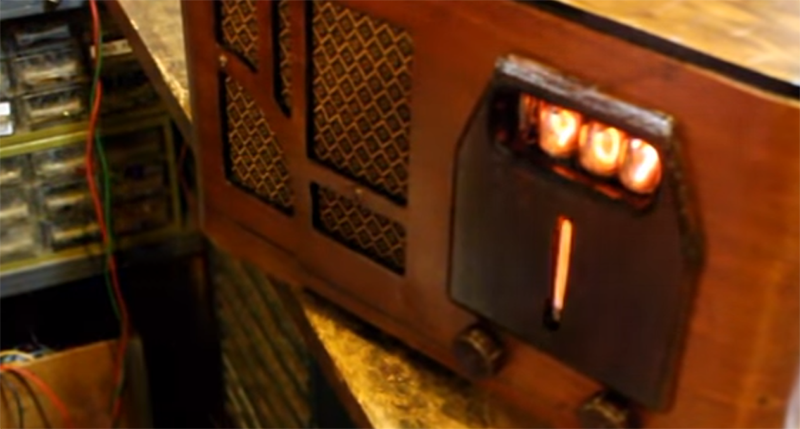Classix Philly One Oh Seven Nine is your home for Philly soul right at the top of the dial. That phrase, ‘top of the dial’ doesn’t mean much these days because we all have radios with a digital display and seek buttons. There was a time when radios actually had dials, but [glasslinger] is in a class all by himself. He’s adding a digital display to a 1940s radio, and he’s doing it with Nixie tubes.
The circuitry for the digital display for this AM radio requires getting the frequency the radio is tuned to. This is done by counting the oscillator frequency, then subtracting the IF. [glasslinger] is doing this with an Arduino (hey, it’s a legitimate engineering choice) and a 4040 12-bit binary counter as a pre-scaler. The Arduino does the math and then drives a few 74141 Nixie drivers, which then display the frequency of the receiver in beautiful glass tubes. Add in a single neon bulb for the thousands digit, and you have a four-digit display that will tell you the frequency you’re tuned to on an old AM radio.
The rest of the build consists of fixing up an old radio and gluing the veneer down again with modern glues that will last another seventy years. The finished cabinet was sanded, a bezel for the display was added, and since [glasslinger] has the equipment, he made a new, long neon tube to light up with the volume of the radio. And you thought a cat’s eye detector was cool.
This build is a tour de force, and something that is so incredibly modern but at the same time built on vintage technology. If you’ve got an hour and a half, we highly recommend checking out the build video below.
















I was expecting this to be tagged as arduino :)
I think you’ve misgendered the person that created this project.
I don’t think so; he’s got a drag persona as far as I know, but aside from that he just crossdresses, meaning he’s probably identifying as male.
That and, all of his builds are impressive and an absolute treat to watch. He may be a bit of an oddity in many ways, but he’s an absolute master of restoring antique radios and creating vacuum tubes with equipment he mostly built himself. An amazing person overall. I personally am glad and thankful that he is going through the trouble of documenting his builds and putting them on youtube.
Ron is a very talented and interesting person. Always wanted to visit his shop and see the collection of radios. Next time I head to Houston I sure want to see what he is up to. Make sure to go back and watch the videos from day one!
I was thinking the same thing and searched google just to make sure. I haven’t found the correct answer yet – but I very much want to address glasslinger the way that they wish to be addressed. Their videos are so very inspiring for a multitude of reasons – thermionic and otherwise!
A 1940s radio would have been unlikely to have FM, given the exploitative corporate chicanery wrapped around its development.
https://www.damninteresting.com/the-tragic-birth-of-fm-radio/
Why doesn’t the Arduino cause RF interference? Is it because the ATmega 328P clock is so much higher than the frequency to which the radio listens?
Quite the opposite, the arduino is clocked at 16MHz while FM sits at 88 to 108MHz (at least in the US, not sure internationally). Now the arduino could potentially interfere with the audio side depending on how fast the I/O is toggling and if the analog bits aren’t properly shielded.
Oops, hadn’t considered AM or shortwave, but in either case I still have a feeling it wouldn’t have much of an effect.
Very Dieselpunk, I like it.